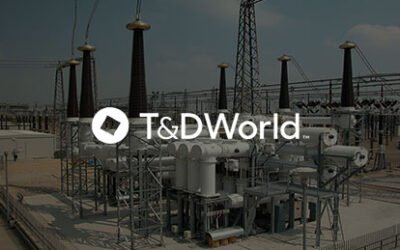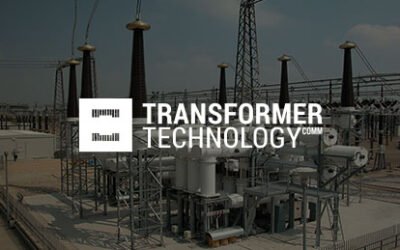Joe Biden, a Democrat, is the apparent winner of the U.S. Presidential race as a result of elections held on November 3rd, 2020. Recent elections are expected to have a considerable impact on the energy sector not only in the U.S. but globally as well which we will discuss in this article.
Paris Climate Agreement
Biden will rejoin the Paris Agreement, which is the most inclusive global agreement on climate change to date. Unlike the Kyoto Protocol which focused on cutting emissions from the developed world, this agreement sets a goal to which almost every country in the world has agreed to contribute.
The goal set in the Paris Agreement, is to keep a global temperature rise in this century to below 2 degrees Celsius above pre-industrial levels. Each country will determine their own Nationally Determined Contributions (NDC) and will report their progress. Every 5 years there will be a global stock take. Support is provided through finance, including the Green Climate Fund. (GCF), to developing and the most vulnerable countries to help them reach their own national objectives.
In 2017, the U.S., under Trump’s administration, withdrew from implementing all non-binding clauses of Paris Agreement. Citing costs to the taxpayer and claiming the deal was inherently unjust, he halted the NDC and the GCF. Followed by the withdrawal the U.S. formally withdrew from the Paris Climate Agreement on 4th November 2020.
Taking cues from the Trump administration, other countries had already envisioned the agreement without the U.S. and started discussing plan B which requires China and India, the number 1, and number 3 major carbon emitters in the world, to step up their commitments.
In 2019, the European Union held meetings to confirm these commitments. China and India are developing countries which are not obligated to cut emissions as per U.S, but they agreed to cut their greenhouse gas emissions under Paris agreement.
Had Biden lost the elections it would have been difficult to save the Paris agreement since the onus would have fallen on other industrialized countries to push emerging economies to cut emissions. As the U.S. rejoins, there will have to be new targets made. Currently the Paris Agreement has set a target for 2030 of 40% cuts in greenhouse gas emissions (from 1990 levels), but with the last years of inaction, it will be harder for the U.S. to hit those targets.
Clean Energy Revolution and Environmental Justice (The Biden Plan)
The Biden Plan covers many aspects of the environment, including the protection of biodiversity and wildlife sanctuaries, ensuring access to clean drinking water and producing cleaner energy. Capital for the plan will come from rolling back Trump tax incentives and will require the federal government to invest 1.7 trillion USD over the next ten years. This amount, coupled with additional private sector, state and local investments will total to more than 5 trillion USD.
The five major points of the plan as are follows:
- Ensuring that U.S. achieves 100% clean energy economy and net zero emissions by 2050
- Building a stronger, more resilient nation
- Rally the rest of the world to meet the threat of climate change.
- Stand up to the abuse of power by polluters, who disproportionally harm communities of color and low-income
- Fulfill obligations to workers and communities who powered the industrial revolution
-
Ensuring that U.S. achieves 100% clean energy economy and net zero emissions by 2050
On the very first day President Biden will sign a series of executive orders that will go beyond Obama-Biden administration to offset the effects of the Trump Presidency. Biden’s first day plan includes the following:
- Require aggressive methane pollution limits for new and existing oil/gas operations.
- Employ a Federal government procurement system (which annually spends 500 billion USD) to push 100 percent clean energy and Zero Emission Vehicles (ZEVs).
- Make all U.S. government installations, buildings and facilities more efficient and climate ready.
- Reduce greenhouse emissions from the transportation sector which happens to be the fastest growing source of U.S. climate pollution. This will be carried out by enforcing the existing Clean Air Act and introducing extensive fuel economy standards. 100 % of new sales for light/medium duty vehicles will be electrified and there will be yearly improvement of the fuel economy in heavy-duty vehicles.
- Include advanced biofuels which will make agriculture a part of the climate change solution.
- Introduce aggressive appliance and building efficiency standards saving consumers money and reduce emissions.
- Require public companies to disclose climate risks and greenhouse emissions from their operations supply chains.
- Every federal infrastructure investment should reduce climate pollution and consider the effects of greenhouse gas emissions and climate change.
Following the Executive Orders, Biden’s legislative agenda on climate change will establish a mechanism to enforce the net-zero emission targets no later than 2050 but will also include a target for 2025, (which is the end of his term). This will be done through investments in energy, climate research and innovation and resilient infrastructure. The plan will:
- Invest $400 billion over ten years to create industries with a focus on clean energy research and innovation. Biden will create ARPA-C, a new, cross-agency Advanced Research Projects Agency bringing together top talent to focus on achieving America’s clean energy targets.
- Incentivize deployment of clean energy on fast track across the country especially in areas affected by climate change.
- Establish grid scale storage at 1/10th of the cost of lithium-ion batteries.
- Shift to small modular nuclear reactors at half the cost of today’s reactors.
- Move refrigeration and air conditioning to use refrigerants with no global warming implications.
- Zero net energy buildings at zero net cost.
- Employ renewables to produce carbon free hydrogen at the same cost as that from shale gas.
- Decarbonize industrial heat that comes from the manufacture of steel, concrete, chemicals and reimagining carbon neutral construction materials.
- Leverage the food and agriculture sector, to remove CO2 from the air and store it underground.
- Capture CO2 from the powerplant exhausts and storing it deep underground and utilizing it to make alternative products.
- Aviation constitutes nearly 2 percent of global gas emissions. One-year agenda aims to target greenhouse aviation emissions.
- Accelerate the development and deployment of carbon capture sequestration technology.
- Identify the future of nuclear energy to tackle climate emergency.
The Biden plan will incentivize the deployment of clean technology throughout the economy to achieve aggressive emission reductions. Here are a few highlights:
- Improvement in energy efficiency of buildings. Biden will build on his efforts on ‘Recovery Act’ and will set a target of reducing the carbon footprint of U.S. building stock 50 percent by 2035, introducing incentives for deep retrofits combining appliance electrification, efficiency, and on site clean power generation.
- Accelerating the deployment of Electric Vehicles (EVs)and Electric Vehicle Supply Equipment. Biden will work with City and State Governments to deploy more than 500,000 new public charging outlets by the end of 2030. Biden will restore the full electric vehicle tax credit to incentivize the purchase of EVs.
- Empower local communities to develop alternative transportation solutions that are cleaner
- Partner with farmers and ranchers for better agriculture practices and deployment of digesters that generate new sources of revenues.
- Migrate the climate impact of urban sprawl.
- Enacting a national strategy to develop a low-carbon manufacturing sector in every state
-
Building a stronger more resilient nation
President elect Biden notes that Infrastructure is critical to economic growth and as part of his plan:
- Improve and design common-sense zoning and building codes
- Work with the insurance industry to lower costs to customers
- Coastal restoration and reinforcement of roads, bridges
- Railroad expansion of both passenger rail and freight.
-
Rally the rest of the world to meet the threat of climate change
Biden is expected to rally the world to meet the emissions targets. The U.S. is the second largest emitter of carbon in the world, but it accounts for 15% of the global emissions so to really address the climate threat other countries must be involved, it has to be resolved globally. Under the Paris Agreement, as mentioned earlier, developing countries are not obligated to cut emissions but the U.S. can directly engage the leaders of these nations and persuade them to make national pledges. Through the Trump Presidency that pressure faded but it is expected that the world’s largest economy will again influence the largest polluters to fulfill their commitments. Climate change will be fully integrated into country’s foreign and national security policy as well as trade.
In his first one hundred days in office, Biden will also demand a worldwide ban on fossil fuel subsidies and also:
- Pursue a global moratorium on offshore drilling in the Artic and reestablish climate change as a priority for the Artic Council. He will also use the council to spotlight Russia’s activities in the Artic.
- Ratify the Kigali Amendment to the Montreal Protocol that reduces the use of hydrofluorocarbons,
- Make future bilateral U.S.-China agreements on carbon mitigation. Stop China from subsidizing coal exports and outsourcing carbon pollution. Through its massive Belt and Road Initiative Beijing is financing dirty fossil fuel energy projects across Asia and beyond.
- Seek a G20 commitment to end all export finance subsidies of high carbon projects.
- Promote transitions to clean energy with a focus on the Caribbean and Northern Triangle of Central America
- Create an integrated grid from Mexico through Central America and Colombia supplied by clean energy
Transatlantic Relations
The tone in transatlantic relationship is expected to change overnight as Biden takes charge of the Oval office in January next year. An immediate return to the Paris Climate Accord will consolidate the good mood. There is a consensus across party lines in the U.S. that China is a rival but there are countries in Europe that do not see it that way. The biggest hurdle for Biden who intends to rally for an allied front comprising European democracies to curtail China’s growing influence Internationally will be Germany which has strong ties with Beijing.
Although Biden will not embarrass European allies as was done in the Trump administration, he will not back down from the pledge that NATO countries gave in 2014 to move towards spending to 2 percent of GDP on Defense. .
U.S. administration will expect the Europeans to lead the effort in the continent to counter Russian and Chinese attempts to establish influence as its geopolitical focus shifts towards Asia from Europe and Middle-East.
Both Biden and Europeans are likely to make another attempt towards a transatlantic free trade agreement.
Bulk Power Executive Order
Biden is expected to revert to Obama-Biden Administration era policy and retain the status of Large Power Transformers (LPTs) as strategic assets. The import of LPTs from China is expected to stay at the current level while ally countries, like Canada, Mexico and South Korea, may get a break from that ban as United States’ local manufacturing capability builds over time to meet local requirements.
-
Stand up to the abuse of power by polluters, who disproportionally harm communities of color and low-income
According to Biden, everyone feels the effects of climate change, but the impacts on health, economics and quality of life are felt more acutely in communities of color, low-income, and in tribal lands. Biden will direct his EPA and the Justice Department to pursue cases to the fullest extent permitted by the law and if needed, corporate executives will be held personally accountable and this could include jail time.
The plan will ensure that all communities have access to safe drinking water. Not only is there insufficient water in certain regions but monitoring of lead and other contaminants is necessary to eliminate health risks. In addition, much of the infrastructure is very old and will need to be updated or replaced.
-
Fulfill obligations to workers and communities who powered the industrial revolution
Biden will fulfill the obligations to all workers impacted by the energy transition, like coal miners and power plant workers and their communities.
Conclusion:
The success of Biden’s agenda rests with his ability to legislate through Congress and specifically the Senate. After the election, the Republicans have 50 senators, and the Democrats have 46. Two senators, representing other parties, usually side with the Democrats, but the fate of the Senate still hangs in balance until the Georgia run-off elections in the first week of January. If Democrats win both seats, then it will be a 50-50 split in the senate and the Vice President has the power to cast the tie-breaking vote. This will clear the way for Biden to fully implement his agenda and not just rely on executive powers which are limited in their scope.
Regardless of the federal government it is interesting to note that polls of the American people, show a high level of support for the Paris Climate Agreement, and 160 U.S. mayors and several states have promised to honor the agreement. It is also worth noting that while the federal government has not led the country in clean energy, 29 states have adopted the Renewable Portfolio Standards which mandate that a specific portion of electricity that utilities sell come from renewables. 14 states have adopted California’s clean air laws and 10 have the same ZEV standards.
Recent Insights
Medium Voltage Switchgear Supply and Demand
In the article, the authors, Saqib Saeed, CPO & Abdullah Kamran, Analyst at PTR Inc. elucidates that medium voltage (MV) switchgear, operating between 1 kV and 42 kV, is essential for controlling, protecting, and isolating electrical equipment. Valued at...
Europe’s Distribution Transformer Market: Adapting to the Impact of Energy Transition
The article authored b Eyman Ikhlaq, Analyst at PTR Inc. highlights that the European distribution transformer market is poised for substantial growth, driven by Europe's commitment to decarbonization, the integration of renewable energy sources, and the increasing...
Europe’s Renewable Revolution
Azhar Fayaz, Senior Analyst at PTR, emphasizes in his article that global initiatives like COP 28 have heightened the urgency for decarbonizing energy systems, positioning Europe at the forefront of the renewable energy transition. The continent's ambitious plan aims...
Ensuring Grid Reliability: Integrating Digital HV Switchgear and Artificial Intelligence
The article by Saifa Khalid, Senior Analyst, and Saad Habib, Analyst at PTR Inc., highlights the evolution of the U.S. high-voltage (HV) switchgear market, driven by advancements in smart grid technology, renewable energy deployment, and the increasing adoption of...



